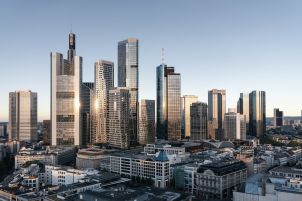A number of environmental and social factors are driving changes in the way buildings are constructed and used. With buildings responsible for around 40% of energy consumption and 36% of greenhouse gases in the EU, climate change is a significant issue for the building sector.
Furthermore, there is a drive to transform the use of buildings, maximising efficiency and making them more integral to community life. Mixed use projects mean buildings can fulfil multiple roles over their lifespan; office space in these developments is no longer isolated from residential and other uses, and large buildings are no longer left empty during the evenings and weekends.
Another factor driving change is the growing focus on the health and wellbeing of building occupants. This increasingly recognised as crucial to companies’ productivity and bottom lines and well as from a sustainability and happiness point of view.
As Catherine Papillon, Global Head of Sustainability / CSR at BNP Paribas Real Estate puts it: “The city of tomorrow must be liveable, enjoyable and inclusive. In short, it must be economically, socially and environmentally sustainable.”
BNP Paribas Real Estate’s ambition is to contribute to this sustainable city by offering products and services that are respectful of the environment and concerned with the health and well-being of occupants. Our CSR strategy underlies this ambition.
A collaborative corporate social responsibility strategy
Our strategy, Inspire Real Estate 2020, was defined collaboratively in consultation with 6,500 stakeholders throughout Europe including customers, suppliers and employees.
It focuses on four responsibilities: economic, environmental, social and civic. These encompass issues such as the circular economy, biodiversity and environmental footprint, as well as issues related to water and air quality, and solidarity and economic initiatives.
Climate change is an issue that BNP Paribas Real Estate is committed to taking into account in our activities. For example, we are ensuring all our buildings in Europe have smart technology installed to help make better use of energy, and all our environmental production is environmentally certified.
Another area in which we contribute to a more sustainable future is education for the construction trades and professions, contributing to the development of the generation that will build the city of tomorrow.
An example of this is the service building, 365-24/24 which combines an academic and co-creatorship approach by working in tandem with our clients and partners. It was also the subject of the BNP Paribas Real Estate competition, Espoirs de l’architecture which focused on the valorisation of urban living and the scarcity of natural resources. The building 365-24/24 therefore aims to respond to these challenges and the needs of a city and those living within it.
Building sustainable cities of the future also means focusing on future modelling for our buildings, which have a lifespan of 50 years. As property managers and asset managers we need to be aware of changes in usage in order to meet the expectations of today and tomorrow.
All this is part of our responsibility to offer innovative and responsible products and services, reduce the environmental impact of our activities and promote the development of our employees.
“We are aware that the world is changing,” said Catherine Papillon, “and if we do not take it into account in our real estate business, we will miss a key turning point.”


The city of tomorrow must be liveable, enjoyable and inclusive. In short, it must be economically, socially and environmentally sustainable
How corporate social responsibility is impacting our business
2018 saw a strong awareness of the importance of sustainable development and CSR among our teams and clients.
CSR is systematically addressed in all BNP Paribas Real Estate management committees, as well as within the Supervisory Board
“Our employees are increasingly interested in considering CSR in their activities and our customers are increasingly demanding concrete and innovative solutions to these issues,” said Catherine Papillon.
“We have started to systematically take these expectations into account in our service offerings, but also in our responses to calls for tenders, which is a significant change.”
The way in which sustainable development permeates BNP Paribas Real Estate’s business is becoming increasingly tangible for stakeholders. These achievements do not happen overnight, but projects initiated three or four years ago are starting to bear fruit today.
How corporate social responsibility is demonstrated in our building projects
BNP Paribas Real Estate works to anticipate and integrate diversified and evolving uses of our buildings. These key projects demonstrate our approach to CSR and sustainability.
Ternes-Villers
This mixed use development, which combines offices, housing and retail space, won a Reinvent Paris commendation for innovative urban projects.
Ternes-Villers features offices and housing, including social housing, designed to offer accessibility. Buildings support biodiversity through the use of bio-sourced wood and green walls. There is also a car pooling scheme and terraces for urban agriculture.
The Arboretum programme, Nanterre
This ecological office campus will contribute to reducing the carbon footprint of construction. Built entirely from wood, it will make use of photovoltaic and geothermal energy for 75% of its heating and air conditioning needs.
When it is completed, it will be the largest campus ever built in solid wood in the world.
17&CO
Offices, an incubator for start-ups, shops restaurants and a hotel are all part of this mixed use development, which made BNP Paribas Real Estate one of the winners of the Inventons la Métropole du Grand Paris contest.
One of the features of the project is that it is designed to be used day and night: for example, the car park is turned into a karaoke space and on weekends.


Learn more from our publication
BNP Paribas Real Estate provides in-depth documents to give you an overview of the major trends affecting the European real estate market.




